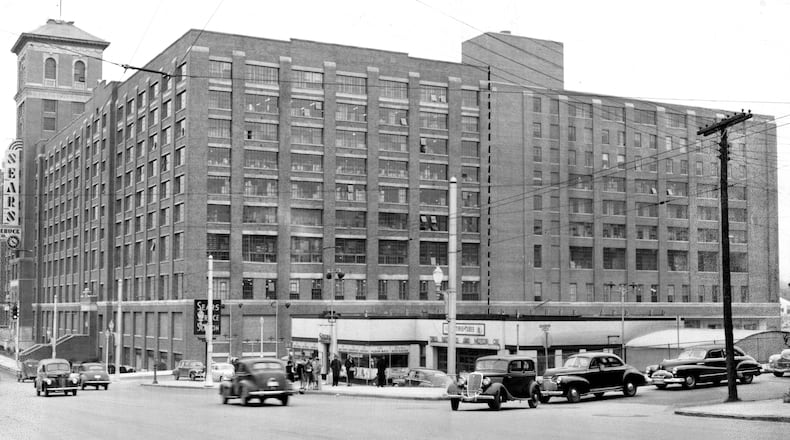Sears, the once mighty mass retailer, announced Thursday it would be closing 72 more Sears and Kmart stores across the country after a $424 million net loss during the first fiscal quarter.
With sales down 30 percent, the company identified 100 underperforming stores (15 Kmart and 48 Sears) that it plans to close in early September.
That list includes three locations in Georgia -- Northlake Mall, 2201 Henderson Mill Road, Atlanta; Southlake Mall, 1300 Southlake Mall, Morrow; and Gwinnett Place Mall, 2100 Pleasant Hill Road Duluth. The auto centers at these locations will close in late July.
The latest closures follow the loss of two other Georgia locations which shuttered earlier this year at Stonecrest Mall in Lithonia and in Valdosta.
It has been many years since the Kmart brand was strong in Georgia -- only two locations remain in Covington and Peachtree City according to the company website. Sears however was still operating in about 40 locations across the state as a mix of Hometown Stores, Appliance Outlets, Auto Centers and Sears stores.
It may be hard to believe with all of the retailer’s current struggles, but Sears was once at the forefront of retail innovation, especially in metro Atlanta.
Along with R.H. Macy & Co., Sears was the trailblazing retailer that began to draw Atlanta consumers to areas north of downtown for shopping.
When the Sears, Roebuck and Co. Warehouse and Retail Store was built on Ponce de Leon in 1926, it was a revolutionary move. Not only was the mail-order business booming but the company had recognized the need to appeal to customers in the city. The new building was one of the largest retail buildings in Atlanta according to documents filed with the National Park Service.
Related: The second lives of Sears buildings
It was a massive commercial enterprise right in the middle of a residential area which allowed shoppers to avoid the traffic, congestion and crowds of the Five Points area downtown where Atlanta’s retail scene had been centered.
Meanwhile, in its mail-order business, Sears was Amazon-like long before Amazon existed shipping goods to 11 million customers a year by 1927.
The Ponce de Leon store was one of the last Sears locations to be constructed as both a retail store and distribution center. It was so popular it had to be expanded in 1932 to add more retail space.
As the company continued building brick-and-mortar stores around the country, retail sales soon eclipsed the mail-order sales.
Photo Gallery: From Sears to Ponce City Market, 1926-present
By the mid 1960s, Sears had become the largest retailer in the country and the Ponce de Leon location served as company headquarters in the South. More Sears stores began cropping up all over Atlanta including a store on West Paces Ferry Road built in 1966.
But the city (and the nation) was undergoing cultural changes that would have a dramatic impact on the retail business. As city residents began fleeing to the suburbs their dollars went with them.
In the 1980s, Sears converted once revolutionary Ponce de Leon location into a surplus center and continued using it for their then struggling catalog sales which the company discontinued in 1994.
Read more: The many lives of Ponce City Market
When the City of Atlanta took over the Sears building in 1990, mayor Maynard Jackson famously called it the “deal of the century” but the area wouldn’t see its former glory until after Jamestown Properties redeveloped the building in 2011.
When Ponce City Market opened in 2015, it seemed the retail life-cycle of the building had come full-circle with Sears, Roebuck & Co. embedded in its history.
About the Author
Keep Reading
The Latest
Featured


